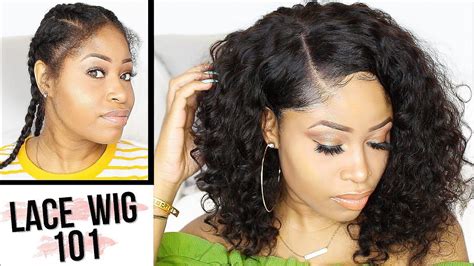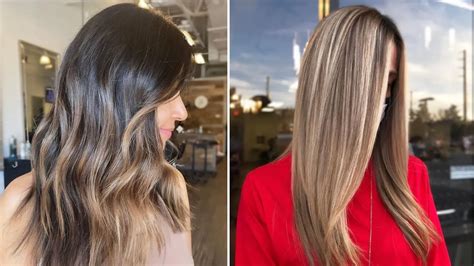Introduction

With the rise of hair coloring techniques tailored for dark hair, the age-old question of “balayage vs. highlights” has resurfaced, leaving many yearning for a deeper understanding of the subtleties and distinctions between these coveted methods. Embarking on an exploration of these techniques will not only empower you to make an informed decision that complements your unique hair but also guarantee a transformative hair experience that exceeds expectations.
1. Technique
Balayage, a French term meaning “to sweep,” employs a freehand painting technique that skillfully distributes lightener onto the hair’s surface. Unlike traditional foil highlights, balayage mimics the natural, sun-kissed effect, creating seamless transitions and a soft, blended finish.
2. Placement
Balayage can be strategically placed to flatter facial features, accentuate layers, and create a customized look. Highlighting, on the other hand, typically involves sectioning the hair and applying lightener in precise, evenly spaced intervals.
3. Maintenance
Balayage requires less upkeep compared to highlights, as the natural blending helps conceal root regrowth. Highlights, however, may require more frequent touch-ups to maintain their vibrant contrast.
4. Customization
Balayage provides unparalleled customization, allowing for a wide range of colors and tones to be seamlessly incorporated into the hair. Highlights offer less versatility in this regard, as the color contrast is more pronounced.
1. Desired Effect
Balayage is ideal for those seeking a subtle, low-maintenance look with natural-looking dimension. Highlights are a better choice for those who prefer a more noticeable, high-contrast effect.
2. Hair Condition
Balayage is less damaging than highlights, as it involves less lifting of the hair’s cuticle. For those with fine or damaged hair, balayage may be a safer option.
3. Time Commitment
Balayage typically takes longer to apply than highlights, as each strand is individually painted. Highlights, due to their more structured approach, can be completed in a shorter time frame.
4. Budget
Both balayage and highlights can vary in cost depending on the length, thickness, and desired level of customization. However, balayage often requires a higher level of skill and artistry, which may reflect in the price.
Balayage
- Section the hair into quadrants.
- Use a balayage brush to apply lightener to the mid-lengths and ends of the hair.
- Use a teasing comb to create soft transitions between the lightened and unlightened hair.
- Leave the lightener on for the recommended processing time.
- Rinse, shampoo, and condition the hair.
Highlights
- Section the hair into small subsections.
- Weave each subsection through a sheet of foil.
- Apply lightener to the hair inside the foil.
- Fold the foil over the lightened hair and seal it.
- Leave the lightener on for the recommended processing time.
- Unfold the foils, rinse, shampoo, and condition the hair.
- According to the American Hairdressing Association, balayage has seen a 25% increase in popularity over the past year.
- Research by L’Oréal Professionnel indicates that 70% of women prefer the natural-looking results of balayage.
- A study conducted by Euromonitor International predicts that the global hair coloring market will reach $35 billion by 2024.
- Q: Can I get balayage on short hair?
- A: Yes, balayage can be customized to flatter all hair lengths, including short styles.
- Q: How often should I get highlights touched up?
- A: The frequency of touch-ups depends on the desired level of contrast and hair growth rate. Generally, 6-8 weeks is recommended.
- Q: Will balayage damage my hair?
- A: While all hair coloring involves some level of damage, balayage is less damaging than traditional highlighting techniques due to the freehand application method.
1. Reverse Balayage
Also known as “ombre balayage,” this technique combines balayage with ombre, creating a seamless transition from dark roots to lighter ends.
2. Dimensional Balayage
This advanced balayage technique utilizes multiple shades of lightener to create multi-dimensional, eye-catching results.
3. Calligraphy Hair
This innovative trend involves using a hairbrush as a painting tool to create intricate designs directly on the hair.
The choice between balayage and highlights ultimately depends on one’s individual preferences, hair condition, and desired effect. Balayage offers a subtle, natural-looking result with low maintenance, while highlights provide a more noticeable, high-contrast effect. By understanding the nuances of each technique and carefully considering one’s needs, you can achieve the perfect hair transformation that harmonizes with your unique beauty.
